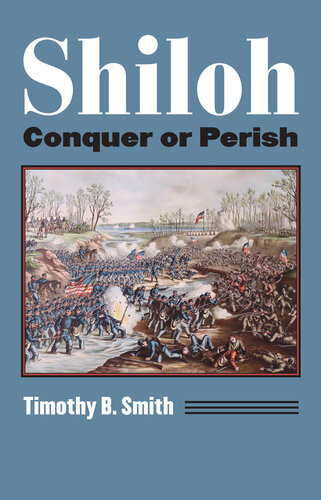

Most ebook files are in PDF format, so you can easily read them using various software such as Foxit Reader or directly on the Google Chrome browser.
Some ebook files are released by publishers in other formats such as .awz, .mobi, .epub, .fb2, etc. You may need to install specific software to read these formats on mobile/PC, such as Calibre.
Please read the tutorial at this link: https://ebookbell.com/faq
We offer FREE conversion to the popular formats you request; however, this may take some time. Therefore, right after payment, please email us, and we will try to provide the service as quickly as possible.
For some exceptional file formats or broken links (if any), please refrain from opening any disputes. Instead, email us first, and we will try to assist within a maximum of 6 hours.
EbookBell Team

4.7
96 reviewsUnfolding over April 6th and 7th, the Battle of Shiloh produced the most sprawling and bloody field of combat since the Napoleonic wars, with an outcome that set the Confederacy on the road to defeat. Contrary to previous histories, Smith tells us, the battle was not won or lost on the first day, but rather in the decision-making of the night that followed and in the next day's fighting. Devoting unprecedented attention to the details of that second day, his book shows how the Union's triumph was far less assured, and much harder to achieve, than has been acknowledged. Smith also employs a new organization strategy to clarify the action. By breaking his analysis of both days' fighting into separate phases and sectors, he makes it much easier to grasp what was happening in each combat zone, why it unfolded as it did, and how it related to the broader tactical and operational context of the entire battle.
The battlefield's diverse and challenging terrain also comes in for new scrutiny. Through detailed attention to the terrain's major features—most still visible at the Shiloh National Military Park—Smith is able to track their specific and considerable influence on the actions, and their consequences, over those forty-eight hours. The experience of the soldiers finally finds its place here too, as Smith lets us hear, as never before, the voices of the common man, whether combatant or local civilian, caught up in a historic battle for their lives, their land, their honor, and their homes.